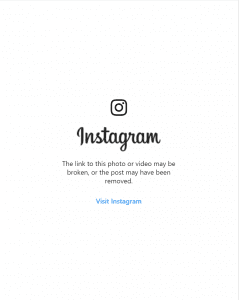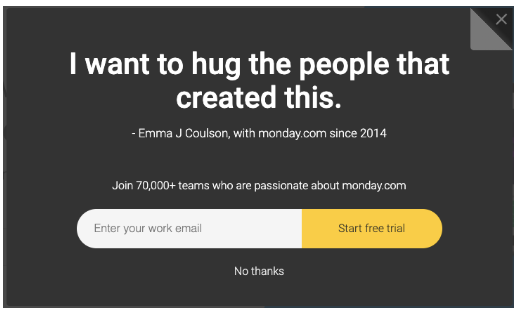What’s social proof?
To put it simply, it means relying on the wisdom of others when making a decision.
Social proof is why you read product reviews before purchasing and ask locals for restaurant suggestions if you are visiting a new city.
Whether you are buying a new mattress or selecting a hotel for your upcoming vacation, It’s simple to get overwhelmed. How do you determine between 100 different options which are supposed “the best”?
Whether you realize it or not, you are probably relying on social proof to make your last decision.
Relying on social proof is universal behavior. 92% of 18- to 34-year-olds get input from family and friends before making a purchase. And as a marketer, it is one of your most necessary tools.
10 social proof examples and use them in marketing
Social proof takes many forms, and lucky for you there are lots of methods to incorporate it into your marketing strategies. Under, we will walk through some of the most valuable types of social proof marketing and how they could work for you.
1. Online reviews
The last time I purchased something without reading a review first, it was a cup of lemonade from a roadside stand. That gamble paid off (refreshing and delicious, and only 50 cents!), however otherwise I always check reviews before buying.
I am not alone: 91 percent of people trust online reviews as much as personal suggestions.
When deciding whether to purchase your product, go to your restaurant, or stay at your AirBNB, customers are going to take a look at reviews first. So be sure to are prominently featuring a few positive ones.
Here are some methods to get positive reviews from customers:
- Ask for them. You need to follow every buy with a request for a rating or review. Make it as easy and low-barrier as possible. Which means short feedback forms, one-click ratings, and simple sign-ins.
- Add an incentive. For instance, embrace a discount code for future purchases to customers who leave reviews. This not only encourages reviews—it additionally drives future sales!
- Provide reminders. Are you in an industry dominated by a third-party review website (like TripAdvisor for travel, or Yelp for food and beverage)? Be direct! Ask your customers to share their feedback on those platforms. Consider providing a discount or perk in exchange for a review.
- Address negative feedback. Even the most-loved brands get a one-star ranking now and then. Usually, good customer service might help to repair this damage: reply to the concern, be kind, and offer a solution (like a return or exchange). This shows potential customers that you are trustworthy, and encourages them to take an opportunity on you.
Review websites are goldmines for glowing tidbits about your brand, so be sure to compile some of the greatest feedback! Then incorporate it into your own social posts, email marketing, and product copy.
2. Influencer endorsements
As we all realized from Mean Girls, if the right person wears army pants and flip flops, then everybody needs army pants and flip flops. That’s the power of an influencer!
Actually, over half of women have made a purchase based on an influencer. They could introduce your brand to new audiences and strengthen your reputation.
You might select to partner on social media posts, blog posts, or videos. You can also go deeper with a takeover.
When deciding on the format and scope of your partnership, keep your target audience in mind. When you are attempting to reach older adults, a Snapchat influencer probably is not the best bet. Likewise, you probably will not catch Gen Z teens on a parenting blog, no matter how prevalent it’s.
The key to successful influencer marketing is discovering the perfect match. You want to work with somebody whose voice and values align with yours.
3. Third-party how-to videos
If an image is worth a thousand words, then a video could tell a whole story about your brand.
Like traditional commercials, videos could provide more depth and information than a single Fb post or tweet. However, while most of us tune out commercials immediately, 87% of Millennials are happy to watch videos that function product demos or sponsored content.
https://www.instagram.com/p/Bya9kOtgytY/?utm_source=ig_embed
Actually, 6 in 10 YouTube subscribers would follow advice on what to purchase from their favorite content creator.
Third-party videos are particularly valuable for demoing products in action. For instance, Dyson partnered with beauty influencer Lauren Curtis to review and demo their Supersonic hair dryer:
Other beauty brands frequently work with influencers to showcase tutorials. Loreal partners with Jill Lansky of The August Diaries to share looks on Instagram:
Meal kit services such as HelloFresh also work with video content creators to show off the convenience and value of their products:
For sponsored video content, make sure you and the creator are clear on deliverables and requirements. If there are key features or advantages that you want them to mention, have these included in a contract.
A word of caution: do not get too prescriptive!
These videos need to feel candid and authentic, which means giving creators free rein to share their honest ideas. Viewers will be capable of telling if they are listening to parroted talking points instead of a real review.
4. Testimonials
Want to gain your audience’s trust? Prove to them that your services or products delivers on its promises.
A tried-and-true method for showing that your brand has integrity is sharing customer testimonials. Those are particularly valuable for services or programs, where you could not depend on compelling product descriptions or pictures.
Like reviews, discussed above, testimonials provide real feedback on customer experiences. But while any customer could leave a review, testimonials are curated and chosen by a business.
Regularly, reviewers post on third-party websites (like Yelp, Google, or Fb). With testimonials, your brand could select how and where your customers’ comments are shared.
Kayla Itsines has built a fitness empire with her Bikini Body Guide (or #BBG) program. Her customer testimonials (including before and after shots) show the value of her workout routines to an audience of 11+ million people.
https://www.instagram.com/p/By48Cg4H5QM/?utm_source=ig_embed
Monday.com is another firm that makes extensive use of customer testimonials. Actually, they’ve a dedicated section for customer stories on their site. However, they also pull excerpts into marketing messages, like their newsletter sign-up form:
This example shows that even a short snippet could have a big effect when used strategically. In addition to showcasing detailed testimonials on your site or brand materials, use brief, however, high-impact sentiments in your marketing messages.
PS: Notice how Monday also mentions their customer count (70,000+ teams) in this pop-up? That’s another piece of social proof you need to incorporate into your messaging.



